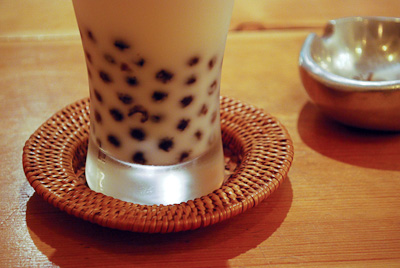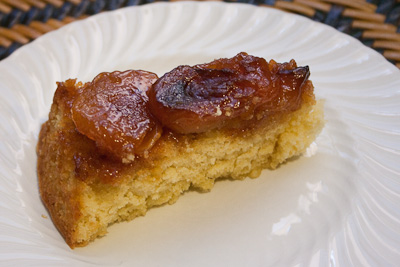Homemade Bubble Tea

Photo: maaco/Flickr
As we all gorge on cupcakes, frozen yogurt, or whatever the latest fad is, I’d like to make a case for bubble tea. In the 1980s, some genius in Taiwan discovered that you can add cooked tapioca pearls (aka boba) to beverages, allowing you to eat and drink at the same time. It hit its peak in the U.S. in the early 2000s, until those Betty Crocker knockoffs took its place.
To me though, bubble tea is timeless because I drank it when I was young, and we tend to idolize our childhood treats. The quintessential bubble tea has bouncy, sweet pearls (otherwise you’re eating soggy, flavorless starch); tea so strong it could pass for coffee; and sweetened condensed milk (just like my grandfather took his tea). I submitted my version for publication at Allrecipes.com in 2001, and over the course of six years, followed up three times. I gave up after that and remembered that I’ve been sitting on a recipe for a decade now.
I’ve seen other methods and recipes, but they vaguely tell you to brew a cup of tea. That’s not going to work; you need far more tea than you think. And here is the method for chewy pearls.
Bubble Tea
Serves 10
2 1/2 slabs peen tang (Chinese brown sugar), or 3/4 cup tightly packed brown sugar
1 (16 oz.) package large tapioca pearls
20-40 black tea bags or loose equivalent
1 (14 oz.) can sweetened condensed milk
Prepare the sugar syrup: (You can do this while the tapioca cooks, if you want.) In a small saucepan, combine sugar with half a cup of water. Heat on medium-high heat until the sugar dissolves.
Prepare the pearls: Fill a large stockpot with 14 cups water (about half way) and bring to a boil.
Pour the tapioca pearls in the water. Bring back to a boil. Turn the the heat to low and boil, covered. Cook for 30 min., stirring occasionally to prevent the tapioca from sticking. At this point, they should be halfway done.
Turn off the heat and let the tapioca sit for another 30 min., covered. They’re done when they expand and are translucent, except for a pinhead-sized dot in the center.
Drain the tapioca through a colander and soak them in cold water to prevent further cooking. After a couple minutes, the tapioca should be completely cool. Drain again into a large container. Coat the tapioca with sugar syrup. Although they’re best the day they’re made, they can be refrigerated for a couple days or frozen indefinitely, laid flat in a zip-top bag. To use frozen tapioca, break off a chunk and boil in water till they’re chewy again.
Prepare the tea: For each serving, boil 1 cup water and steep with 2 bags for hot tea, or 4 for iced, for 10 minutes. Tea should look very dark.
For iced tea, refrigerate for several hours before adding the rest of the ingredients. Prior to serving, stir 1 1/2 tbsp of sugar syrup and 1 tsp-1 tbsp sweetened condensed milk (depending on your taste) in each cup. Add 1/4 cup pearl tapioca. Drink through fat straws.
Notes about ingredients/supplies (you can find them online or at a Chinese supermarket)
Chinese brown sugar: Peen tang, or Chinese brown candy, is less processed than regular sugar and has a rich, caramel taste. It can’t be used in traditional pastry though: it must be dissolved in water.
Tapioca pearls: these are larger than the kind you use in pudding; when cooked, they’ll expand to the size of marbles. Bubble tea houses use the black variety, which has brown sugar added during manufacturing. White tapioca is fine too. Be sure to read your package; some are quick cooking and only take about 15 minutes. I haven’t used this kind because it’s par-cooked. It’s like substituting minute rice for the real thing.
Fat straws: these are wide enough to accommodate the pearls
Related Links:
Cold-brew iced coffee
Char siu bao (Chinese roast pork buns) from scratch
Tea-poached prunes
Japanese green tea cheesecake
Green tea biscotti



